Nepean: Pro Plan Stops Boxwood Blight Before It Starts
Article Quick Summary:
- Boxwood blight is a fungal disease threatening shrubs in Nepean and Ottawa.
- Key symptoms include leaf spots, stem streaks, and rapid leaf drop.
- Prevention focuses on smart planting, proper watering (avoiding wet leaves), strict sanitation (clean tools, debris removal), and choosing resistant varieties.
- Seasonal care (spring cleanup, summer monitoring, crucial fall debris removal) is vital.
- Professional help offers expert diagnosis, preventative treatments, and thorough cleanup services like those offered by Clean Yards.
Ready to protect your valuable boxwoods from blight? Don't wait for signs of trouble. Request a free quote today for a professional prevention plan tailored to your Nepean garden.
Introduction: Boxwoods Under Siege in Nepean? Not On Our Watch!
Ah, boxwoods. Those perfectly clipped hedges and neat little shrubs that bring such classic charm to our Nepean homes. They're the dependable backbone of many landscaping designs, always looking sharp... usually. But lately, there's a sneaky villain lurking in the gardens of Ottawa, and it has its sights set on our beloved boxwoods. It's called boxwood blight, a rather nasty fungal disease that can quickly turn your lush green beauties into sad, patchy messes. Think sudden leaf drop, black streaks on stems – definitely not the sophisticated look we love in neighbourhoods like Barrhaven or right here in Nepean!
It sounds serious, and frankly, it can be. This isn't some far-off gardening problem; it's a potential threat right here in our community. But don't grab the garden shears for a farewell trim just yet! This guide is here to shed light on this blight business and, more importantly, focus on how *proactive professional prevention* is your best defence. We'll explore practical tips and expert strategies to safeguard your investment. Think of this as your friendly neighbourhood guide to keeping those boxwoods brilliant. We're not letting blight spoil the view! Check out our past projects to see how we help homeowners maintain beautiful landscapes.
What *is* This Boxwood Blight Thing Anyway? (And Why Ottawa Should Pay Attention)
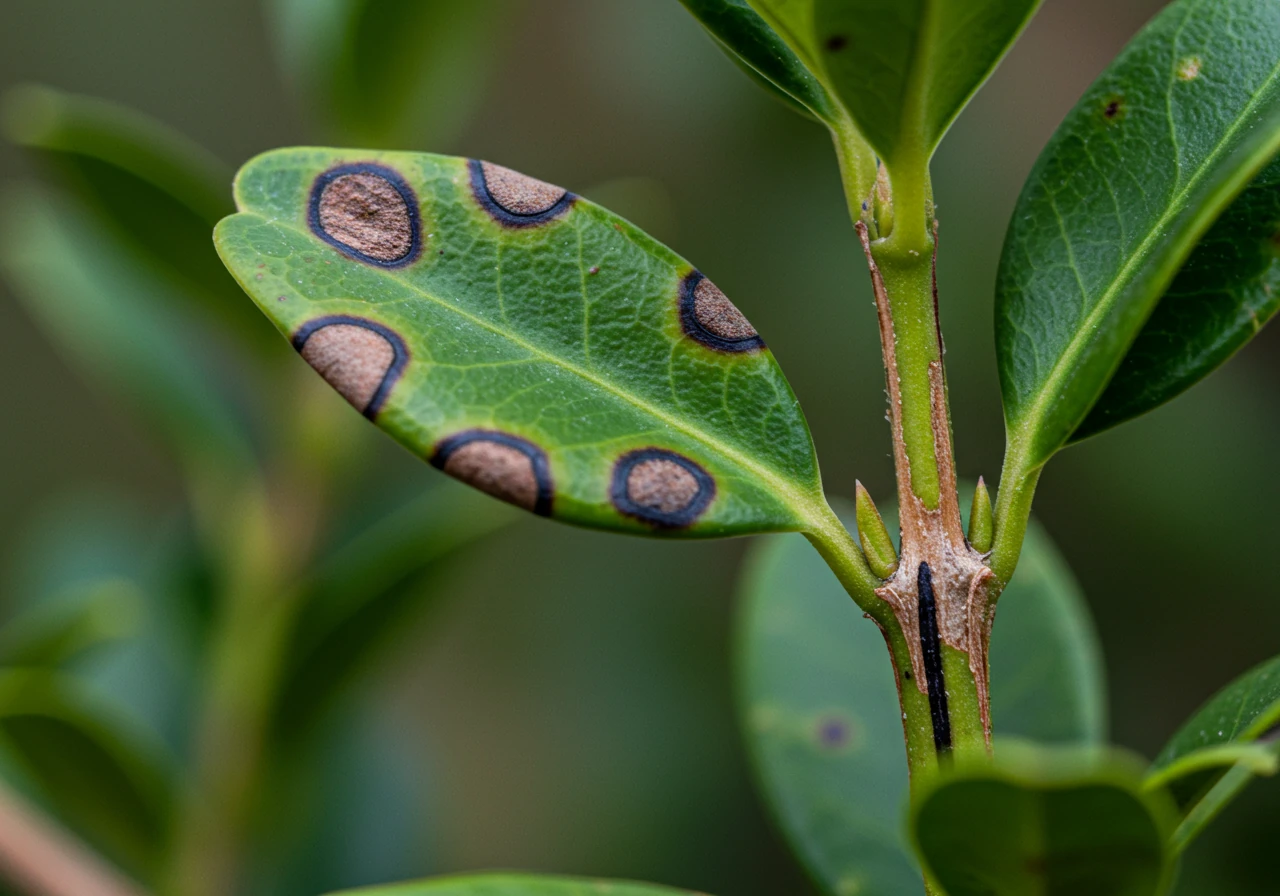
Okay, let's talk about this "boxwood blight." Sounds a bit dramatic, like something out of a garden horror movie, right? But basically, it's a really annoying fungal disease that specifically targets our lovely boxwood shrubs. Think of it like a particularly nasty cold or flu, but for plants. It’s caused by a specific type of fungus that just *loves* boxwoods, unfortunately. Learn more about common plant diseases from the Ontario Ministry of Agriculture, Food and Rural Affairs (OMAFRA).
So, how do you know if this unwelcome guest has moved into your garden? Keep an eye out for these tell-tale signs:
- Leaf Spots: You might see circular brown spots on the leaves, sometimes with darker edges. They stand out against the usual green.
- Stem Streaks: Check the stems for dark brown or black streaks running along them. It looks a bit like someone took a marker to them.
- Sudden Leaf Drop: This is a big one. Affected leaves turn brown or straw-coloured and fall off *fast*, leading to sad, bare patches in your once-lush hedge or shrub. It can happen surprisingly quickly, leaving your plant looking sparse.
Now, how does this fungal fiend travel? It's pretty sneaky. The main culprits are splashing water (think rain or even your sprinkler system – which is why proper water management and maybe even considering Nepean Irrigation Winterization Avoid Pipe Damage to ensure systems aren't adding excess moisture is key), contaminated gardening tools (clean those pruners between plants!), moving infected plants or soil, and even wind or animals (or us humans!) carrying spores around on shoes or clothing.
Why should folks in Ottawa, especially in areas like Nepean or Manotick, be extra vigilant? Our weather plays a big role. Those warm, humid summer days and periods of rain create the perfect damp party conditions for this fungus to thrive and spread. Good air circulation around your plants helps combat this, which is something to consider alongside other yard health practices like ensuring good drainage, perhaps even helped by services like Nepean Spring Lawn Aeration Ottawa, as healthy surroundings can support overall plant resilience. Spotting issues early during routine checks, like those discussed in our guide to Nepean Fall Garden Health Checks, is crucial. If you do find infected bits, removing them carefully is vital – something a thorough Nepean Yard Cleanup Service can assist with, ensuring diseased debris doesn't linger and spread. Proper cleanup, especially before winter as part of your Nepean Fall Garden Prep Colour Winter Tips, helps reduce the chances of the fungus surviving until spring. Understanding this blight is the first step, and if you suspect you have it, exploring Our Landscaping & Yard Care Services for expert advice and management options is a smart move.
Playing Detective: Spotting Blight Before It Wreaks Havoc
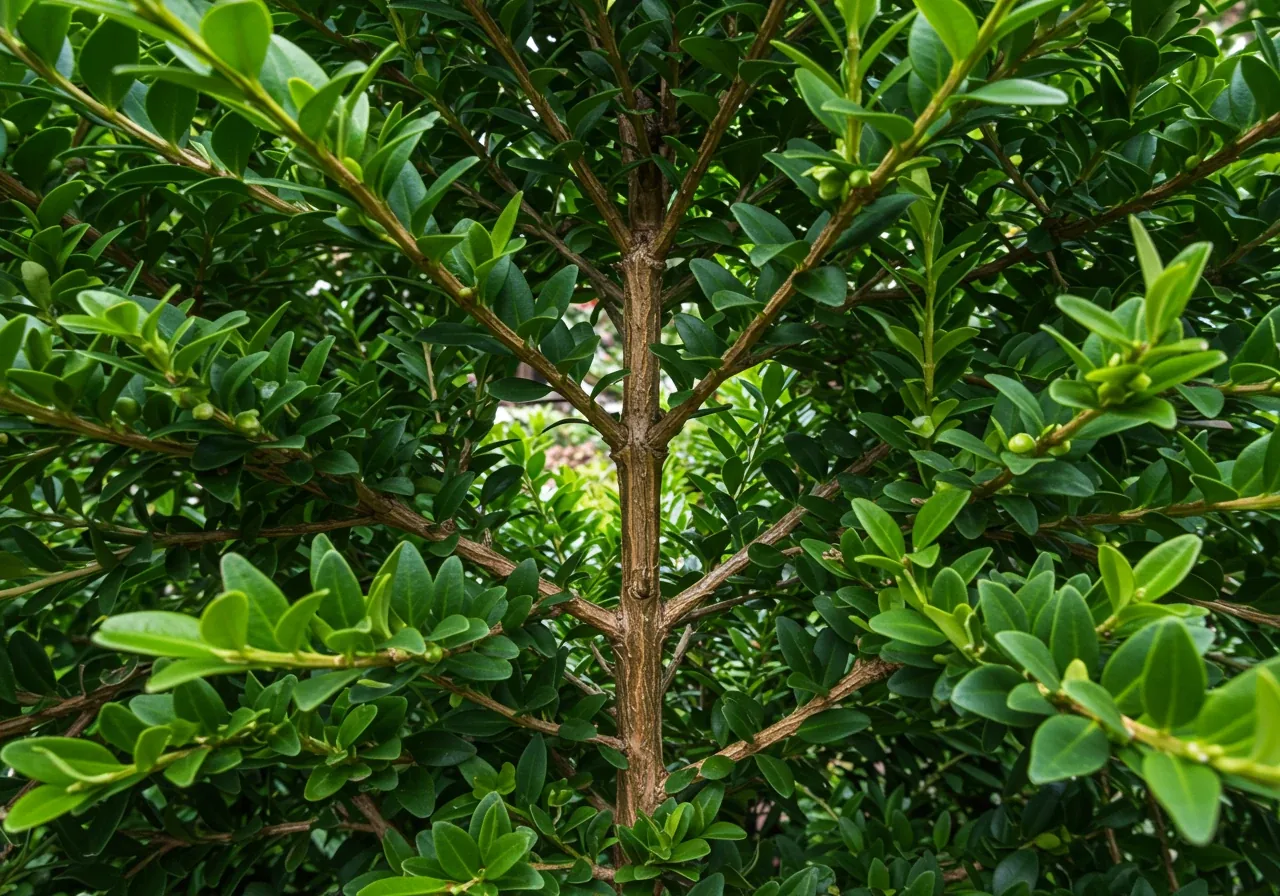
Alright, let's put on our detective hats! Spotting boxwood blight early is like catching a sneaky garden gnome before he rearranges all your prize-winning petunias – it saves a lot of headaches later. Catching this disease in its early stages gives you the best chance to manage it and protect your beloved boxwoods, whether you're in Nepean, Manotick, or anywhere else in the Ottawa area. Waiting until your shrub looks like it went twelve rounds with a weed whacker makes things *much* tougher.
So, how do you become a Blight Buster? Regular check-ins are key, especially during warm, humid, or rainy weather from late spring through fall. Think of it as a quick wellness check for your plants. Here’s your simple inspection routine:
- Get Up Close and Personal: Don't just glance from the patio! Kneel down and gently part the outer leaves. Blight often starts low and inside the shrub where humidity lingers.
- Leaf Lookout: Look for those distinct circular, tan spots on the leaves, sometimes with dark borders. Are leaves suddenly turning brown or straw-coloured and dropping? *Big* red flag.
- Stem Scrutiny: Carefully examine the woody stems, especially newer green growth. Search for those tell-tale dark brown or black streaks or diamond-shaped lesions.
- Check the Ground: See a carpet of rapidly dropped leaves under an otherwise okay-looking section? Investigate that area closely. Proper Property Clean Up is crucial, as fallen infected leaves can spread the disease.
Is it Blight or Just a Bad Hair Day?
Sometimes, other issues can mimic blight, causing confusion. Here’s a quick comparison:
Key Signs: Rapid leaf drop, distinct circular tan leaf spots (often with dark borders), *and* black streaks on stems. Usually starts lower/inner parts of the plant in humid conditions.
Key Signs: Uniform browning or bronzing, typically on the side exposed to harsh winter winds or sun. No black stem streaks. Leaves tend to cling longer before dropping.
Key Signs: Causes winding trails or blisters *inside* the leaves, making them look papery or discoloured. You won't see the characteristic black stem streaks of blight.
Key Signs: Another fungus, but it often causes salmon-pink spore masses on the undersides of leaves and stems, and leaves tend to stay attached longer after dying. Blight usually lacks these pink spores and has faster leaf drop.
Regular inspections, maybe even as part of a scheduled City Garden Maintenance Service, are your best bet for early detection. If you do spot something suspicious, *don't* compost the clippings! Bag them immediately and dispose of them properly. Thorough removal of potentially infected debris is vital, something a dedicated City Garden Clean Up Service understands well. For larger areas or if the problem seems widespread, considering a City Property Cleanup Service might be necessary to contain the spread effectively. If you're unsure what you're seeing, remember the experts are here to help. Our team – you can learn more About Us – has experience dealing with various landscaping challenges in Ottawa. Don't hesitate to seek professional advice; early action is everything! And keeping the surrounding area tidy with services like a Nepean Yard Cleanup Service can also help reduce hiding spots for pests and diseases. Find local experts through resources like Landscape Ontario.
The Proactive Playbook: Your Best Defence Against Blight in Nepean
Okay, let's talk strategy! Preventing boxwood blight in Nepean is way easier (and less heartbreaking) than trying to cure it once it takes hold. Think of this as your proactive playbook – the best defence is a good offence, right? Arming yourself with knowledge and good gardening habits is like giving your boxwoods a superhero cape.
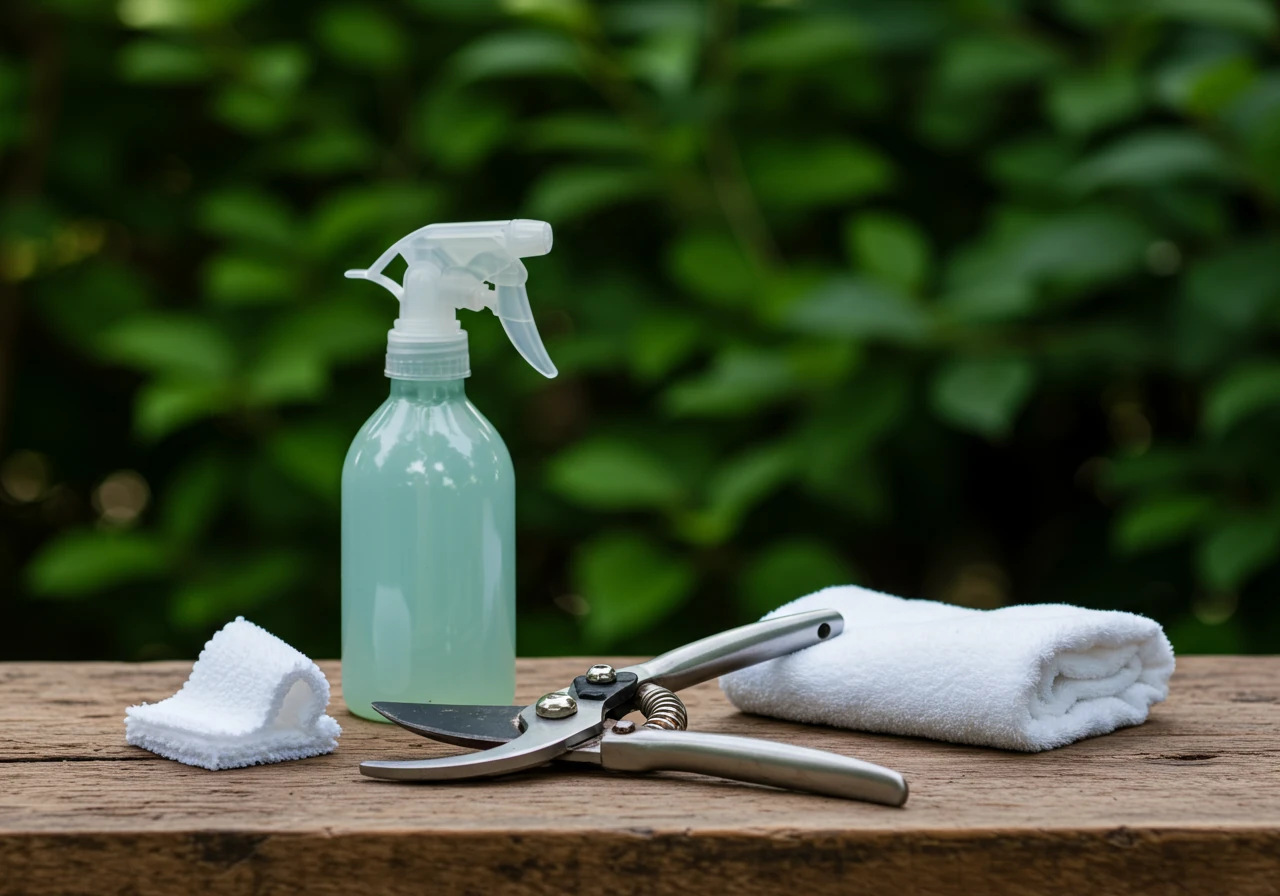
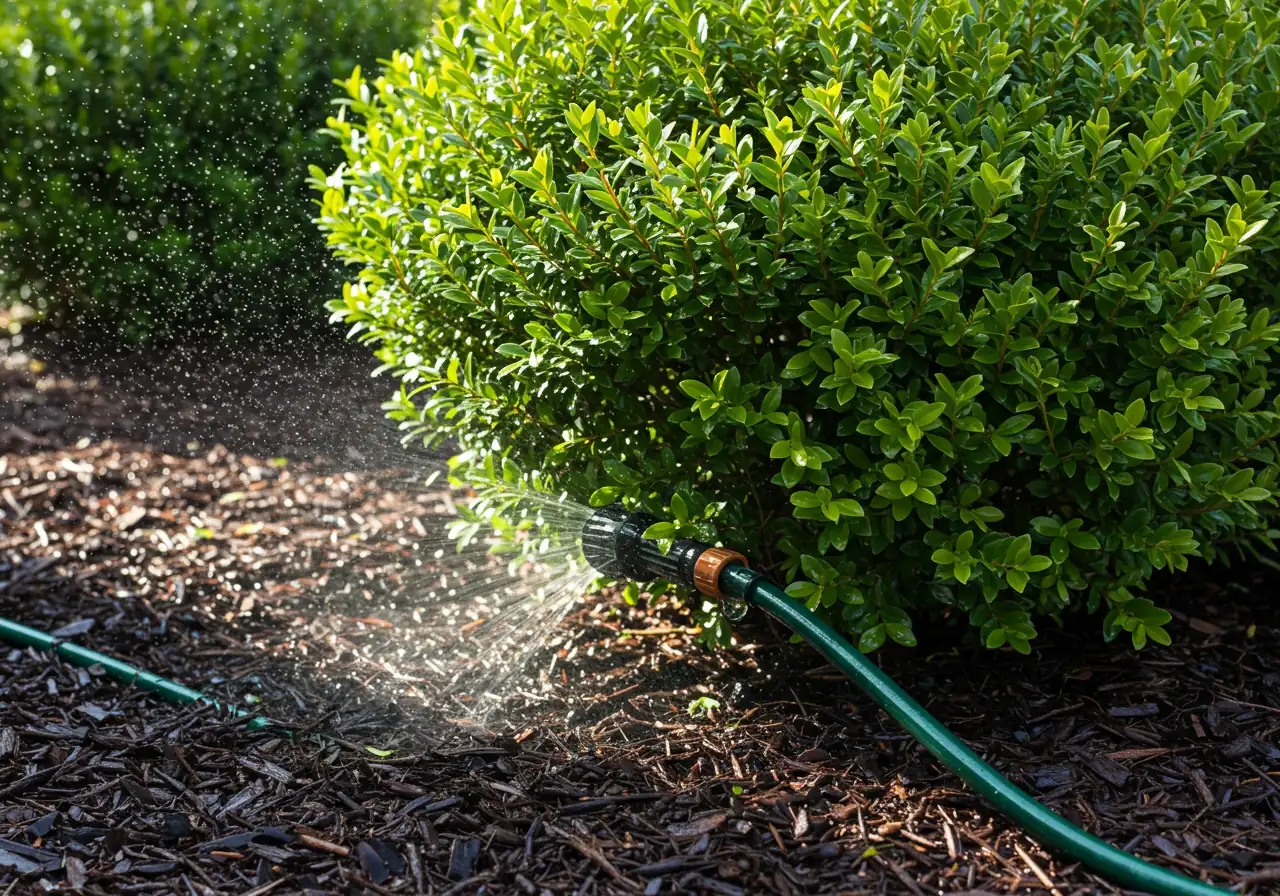
Facing potential boxwood troubles? Don't sweat it! With a smart game plan, you can keep those gorgeous greens looking sharp. Here’s how to play defence like a pro:
- Plant Smart from the Start:
- Choose Wisely: If you're planting new boxwoods, ask about resistant cultivars. Some varieties are naturally tougher against blight than others. It’s like picking the hardiest player for your team! This is a key part of successful Garden Install projects.
- Location, Location, Location: Give your boxwoods room to breathe! Planting them too close together, especially in damp or shady spots, creates a humid haven perfect for fungal foes. Good air circulation is key. Ensure they get enough sunlight too – blight isn’t a fan of sunny, breezy spots. Think prime real estate, just like choosing a spot in Nepean or Barrhaven! Proper Soil Preparation can also improve drainage.
- Water Like a Watering Wizard:
- Aim Low: Blight spores spread easily with splashing water. Avoid overhead sprinklers that soak the leaves. Instead, use a soaker hose or drip irrigation to deliver water directly to the soil at the base of the plants. Keep those leaves dry!
- Morning is Best: Water early in the day. This gives the foliage plenty of time to dry out before evening temperatures drop, reducing the damp conditions blight loves, especially during Ottawa’s humid summers.
- Keep it Clean - Seriously Clean!
- Tool Time Tactics: Fungi can hitch a ride on dirty tools. *Always* clean and disinfect your pruners, shears, and shovels between plants, especially if you suspect any disease. A quick wipe with rubbing alcohol or a disinfectant spray works wonders.
- Debris Duty: Don't let fallen leaves and twigs linger around your boxwoods. These can harbour spores. Regularly clean up debris from under and around the shrubs. A thorough Ottawa Garden Clean Up Service ensures no potentially infected material is left behind. Keeping the whole yard tidy matters; standards like those used for a comprehensive Marionville Property Cleanup Service should be applied everywhere, ensuring thoroughness.
- Inspect Newcomers: Carefully check any new boxwood plants *before* introducing them to your garden to ensure they are disease-free. Quarantine if possible for a few weeks.
- Boost Soil Health & Support:
- Mulch Magic: Applying a layer of organic mulch (like shredded bark) around your boxwoods helps in several ways. It retains soil moisture (reducing water stress), suppresses weeds, and – crucially – creates a barrier that minimizes water splashing from the soil onto lower leaves. Just be sure not to pile mulch right up against the stems. Preparing the area might involve work an expert Metcalf Garden Clean Up Service could handle efficiently. See our Mulching and Edging services.
- Feed Carefully: Healthy plants are more resilient. However, avoid excessive nitrogen fertilizer, which can promote lush, dense growth that stays damp longer. Use a balanced fertilizer appropriate for shrubs, and only if your soil needs it. Well-draining soil is also important; amend heavy clay soils common in some Ottawa areas if needed.
- Call in the Professionals (Your Backup Team):
- Expert Eyes: Sometimes, spotting the subtle, early signs of blight takes a trained eye. Regular check-ins from landscaping professionals can catch problems before they escalate. This is often part of ongoing Garden Maintenance programs.
- Preventative Measures: For high-value hedges or in areas where blight is known to be active, preventative (prophylactic) fungicide applications might be considered during high-risk periods. This is best discussed and handled by professionals who know the right products and timing. Consider a scheduled City Garden Maintenance Service for consistent monitoring and care. If professional monitoring and proactive care sound like a good fit for protecting your investment, reach out – we always like to say Thank You to neighbours taking great care of their gardens!
Implementing these proactive steps doesn't guarantee blight immunity (gardening always has its surprises!), but it *significantly* stacks the odds in your favour. It's about creating an environment where your boxwoods can thrive, and blight struggles to get a foothold. Happy, healthy gardening in Nepean! For broader property tidiness, consider services like Ottawa Property Cleanup Service.
Factors Increasing Blight Risk (Illustrative)
A Year-Round Shield: Seasonal Blight Strategy for Ottawa Gardens
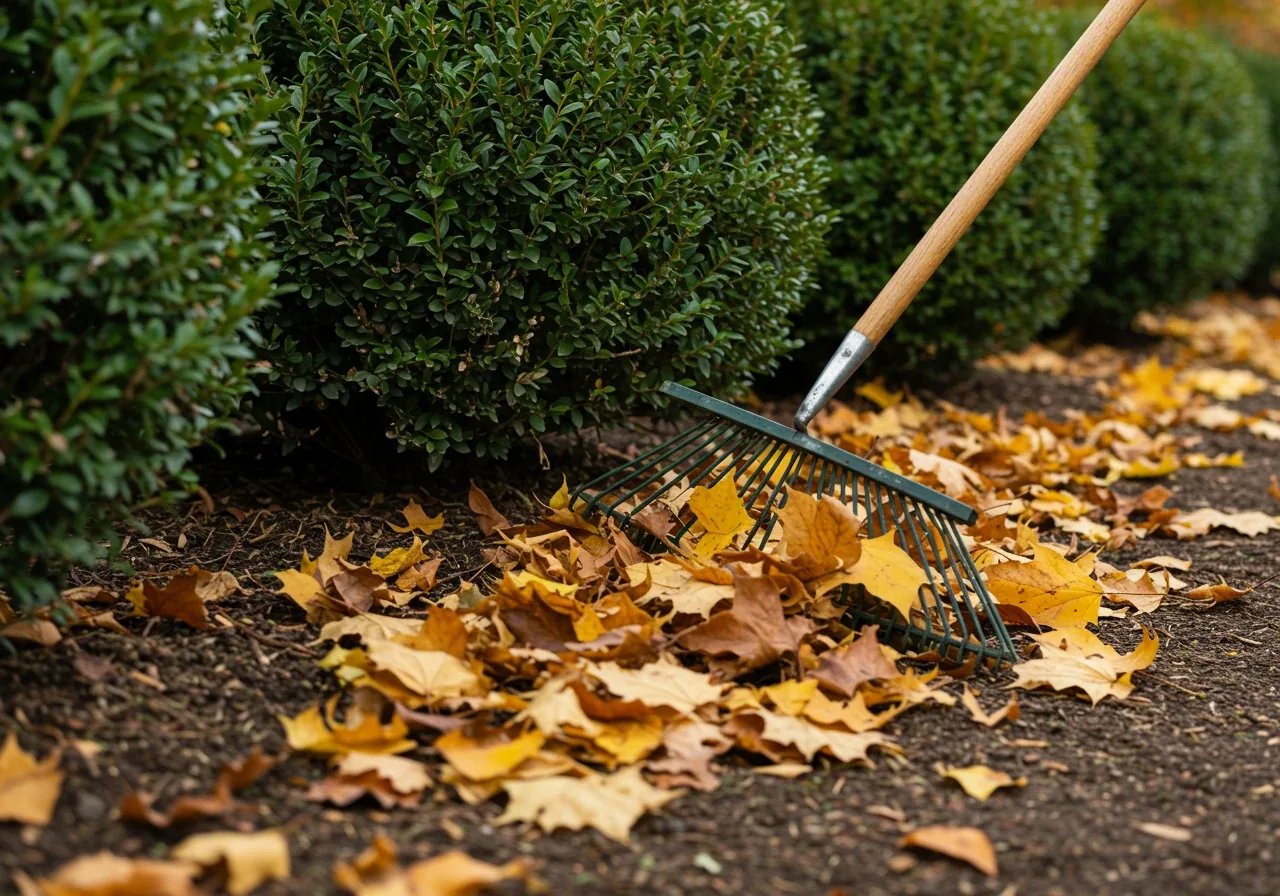
Keeping boxwood blight at bay isn't a one-and-done job; it's more like a year-round relationship with your garden. Think of it as seasonal tune-ups to keep your leafy friends happy and healthy, shielding them from that nasty fungal foe. Here in Ottawa, with our distinct seasons, timing is everything! Here’s a simple seasonal guide to keep your boxwoods beaming:
Spring (April - May): The Wake-Up Call
Ah, spring! The snow melts (finally!), revealing... well, whatever winter left behind. This is prime time for a garden assessment.
- Gentle Cleanup: As the ground thaws, carefully clear away any winter debris, old leaves, and dead twigs from around your boxwoods. This removes potential hiding spots for fungal spores. A thorough spring spruce-up, like the kind many folks in Greely undertake, sets a clean stage. Consider bringing in experts for a comprehensive Ottawa Garden Clean Up Service if winter was particularly messy.
- Inspect & Prune (Carefully!): Once the risk of hard frost is gone, check for any winter damage or suspicious spots leftover from last year. If you need to prune for shape or remove damaged bits, *always* disinfect your tools between cuts and especially between plants. Don't spread trouble!
- Mulch Refresh: Apply a fresh layer of quality mulch around the base (not touching the stems!) to help retain moisture evenly and reduce soil splash.
Summer (June - August): The Watchful Eye & Watering Wisdom
Ottawa summers can bring heat and humidity – perfect weather for blight to party. Stay vigilant!
- Water Smart: Remember, water at the base, preferably in the morning. Avoid soaking the leaves with overhead sprinklers. Consistent, deep watering is better than frequent shallow splashes.
- Scout Regularly: During warm, damp periods, make it a weekly habit to peek inside your shrubs for those tell-tale leaf spots or stem streaks. Early detection is your superpower!
- Air Flow is Key: Ensure plants aren’t overcrowded. Good air circulation helps leaves dry quickly. If blight has previously caused significant damage requiring removal, you might be considering restoration options like improving lawn health nearby or even fresh Sod Installation in affected garden areas.
Fall (September - November): Prep for the Winter Nap
As temperatures cool, it's time to tuck your garden in properly. This is arguably the *most critical* season for blight prevention.
- Meticulous Cleanup: Rake up and *remove* all fallen boxwood leaves and any other garden debris. Don't compost potentially infected material! Bag it and get rid of it. This step is crucial to reduce the amount of fungus overwintering. Think comprehensive tidiness, the kind offered by a detailed Marionville Garden Clean Up Service or a broader Marionville Yard Cleanup Service to ensure the entire vicinity is clear. Fall prep in areas like Richmond often focuses heavily on leaf removal – follow their lead!
- Final Inspection: Give your boxwoods one last good look-over before winter truly sets in.
- Avoid Late Pruning: Heavy pruning late in the season can encourage tender new growth that won't harden off before winter, stressing the plant.
Winter (December - March): Rest, Plan, and Protect
While the blight fungus is mostly dormant in the cold, your job isn't quite over.
- Protect from Damage: Heavy snow load can break branches, creating entry points for diseases come spring. Gently brush off heavy snow if possible. Protect plants from harsh winds or road salt spray if they're in exposed locations. For tips on general winter protection, check resources from the City of Ottawa.
- Plan Ahead: Use the quieter months to plan any larger garden projects or schedule professional help for the upcoming season. Maybe you need a more robust cleanup next year? Perhaps preventative treatments? Reviewing needs and even providing Estimate Feedback on past services helps everyone prepare for a successful spring. Thinking about a larger scale tidy? Services like a City Yard Cleanup Service can handle bigger tasks when the time comes.
By following these seasonal steps, you’re giving your Ottawa boxwoods their best defence throughout the year. Happy gardening!
Highlight Box: Your Quick Blight-Busting Cheat Sheet
Feeling the pressure about potential boxwood blight turning your gorgeous Ottawa shrubs into sad, patchy sticks? Don't sweat it too much! Keeping those leafy beauties healthy is totally doable with a little know-how. Here are your mission-critical tips – your cheat sheet to outsmart that pesky fungus and keep your boxwoods beaming, whether you're in Nepean, Greely, or anywhere else nearby!
- Water Wisely, Not Widely! Think "dry leaves are happy leaves!" Boxwood blight fungus *loves* moisture sitting on the foliage. Ditch the overhead sprinkler for your boxwoods. Instead, use a soaker hose or drip irrigation to deliver water right to the soil at the base. Water in the morning so any accidental splashes dry quickly in the sun. Remember, a healthy overall yard environment supports resilient plants, so maintaining good drainage and consistent Lawn Care practices contributes to your boxwoods' well-being too.
- Give 'Em Space & Keep it Super Tidy! Crowded boxwoods = poor air circulation = happy fungus. Make sure your plants have room to breathe! Also, be a ninja about cleanliness. Regularly rake up and *remove* fallen leaves, twigs, and any debris from under and around your shrubs. Don't let spores find a cozy home! This level of thoroughness is key – think the attention to detail you'd expect from a dedicated Metcalf Yard Cleanup Service, ensuring no potentially infected material lingers.
- Clean Tools are Cool Tools (Seriously!) Imagine your pruners as tiny taxis carrying fungal spores from plant to plant – yikes! Prevent this by *always* cleaning and disinfecting your shears, shovels, and any other gardening tools *after* working on one boxwood and *before* moving to the next. A simple wipe with rubbing alcohol or disinfectant solution does the trick. It’s a small step that makes a huge difference.
- Know When to Call for Backup! See suspicious spots or sudden leaf drop? Not sure if it's blight or something else? Don't play guessing games with your valuable plants! Getting expert eyes on the situation early can make all the difference between minor intervention and major shrub loss. If you decide professional help is needed for monitoring, treatment, or even a large-scale cleanup, it's always smart to review the company’s service details and understand their Terms and Conditions beforehand. Feeling a bit lost in the leaf litter or unsure about the next steps? Don't hesitate to Contact Us – we're happy to help Ottawa gardeners find the right solutions. Plus, if you receive estimates for services, providing Estimate Feedback helps companies refine their communication and ensures everyone is on the same page. You can also check our reputation on Google.
FAQs: Boxwood Blight Concerns in Nepean & Ottawa Answered
It's definitely something Ottawa gardeners should be aware of! While not *every* boxwood in Nepean or nearby areas like Barrhaven is doomed, the blight *is* present in Ontario and our warm, humid summers create favourable conditions. Vigilance and preventative care are your best friends to keep your shrubs looking sharp and avoiding trouble.
Unfortunately, yes. Those microscopic fungal meanies are tougher than they look! The blight fungus (Calonectria pseudonaviculata) can survive Ottawa winters on infected plant debris (leaves, stems) left in the garden or on dormant shrubs. That's why a thorough fall cleanup is super important – consider an expert Ottawa Yard Cleanup Service to ensure no infected bits are left behind.
Okay, deep breath! First, isolate the plant – stop pruning or shearing it (or others nearby) until you know what’s up, to avoid spreading potential spores. Take clear photos. Bag any fallen leaves or clippings immediately for disposal (not compost!). If the infection seems significant, getting professional advice or help with a careful Ottawa Property Cleanup Service to remove infected material safely is a wise next step.
Absolutely! Good 'garden hygiene' is your greenest weapon. Focus on proper plant spacing for air circulation, watering *only* the soil (not the leaves!), and diligent cleanup of fallen debris. Applying organic mulch, part of good Mulching and Edging practices, also helps reduce soil splash. These cultural controls significantly minimize conditions blight loves, reducing the need for fungicides.
Yes! Choosing resistant varieties is a smart move. Look for cultivars like 'New Gen Independence', 'New Gen Freedom', or 'Green Velvet' (which shows *some* tolerance). Always research or ask your nursery expert. When selecting plants or even landscaping materials like mulch, making informed choices is key; you can learn more about smart Material Selection for a healthier garden overall.
Removal needs to be thorough to prevent recurrence. Carefully dig out the entire plant, including as much of the root system as possible. Bag everything immediately – leaves, stems, roots, and even the top layer of soil/mulch around it. For larger removals or ensuring complete tidiness across the property, consider a specialized service like a Metcalf Property Cleanup Service that understands the importance of removing potentially contaminated material effectively. Also, review our Privacy Policy regarding service engagements.
Conclusion: Partnering for Healthy Hedges in Nepean
Whew! We've journeyed through the world of boxwood blight, and hopefully, you're feeling more equipped than alarmed. Remember, this fungal foe *is* a concern for our lovely landscapes here in Nepean and across Ottawa, but it doesn't have to spell doom for your beautiful hedges. The biggest takeaway? *Proactive prevention* is your absolute best strategy. Being vigilant, keeping your garden tools and beds tidy, watering wisely – these actions are crucial first steps.
But let's be honest, life gets busy, and sometimes spotting subtle disease signs or knowing the *exact* right prevention step feels like trying to solve a garden riddle. That's where partnering up makes all the difference. Think of us as your friendly neighbourhood hedge health allies! We bring the trained eye, the landscaping know-how, and tailored prevention strategies to the table, helping homeowners in Nepean, Barrhaven, Greely, and surrounding communities like Metcalfe and Marionville safeguard their valuable shrubs *before* problems take root. Why lose sleep worrying about potential blight spots when you can have the peace of mind that comes with a professional plan? Let's work together to keep those hedges looking lush and lovely.
Don't wait for those leaves to start dropping – give your boxwoods the expert attention and protection they deserve. Let's keep Nepean's hedges healthy, together!
Ready to team up for thriving shrubs?
Schedule a Garden Health Assessment
